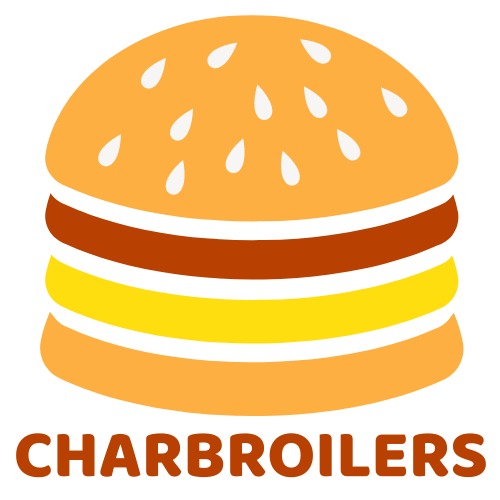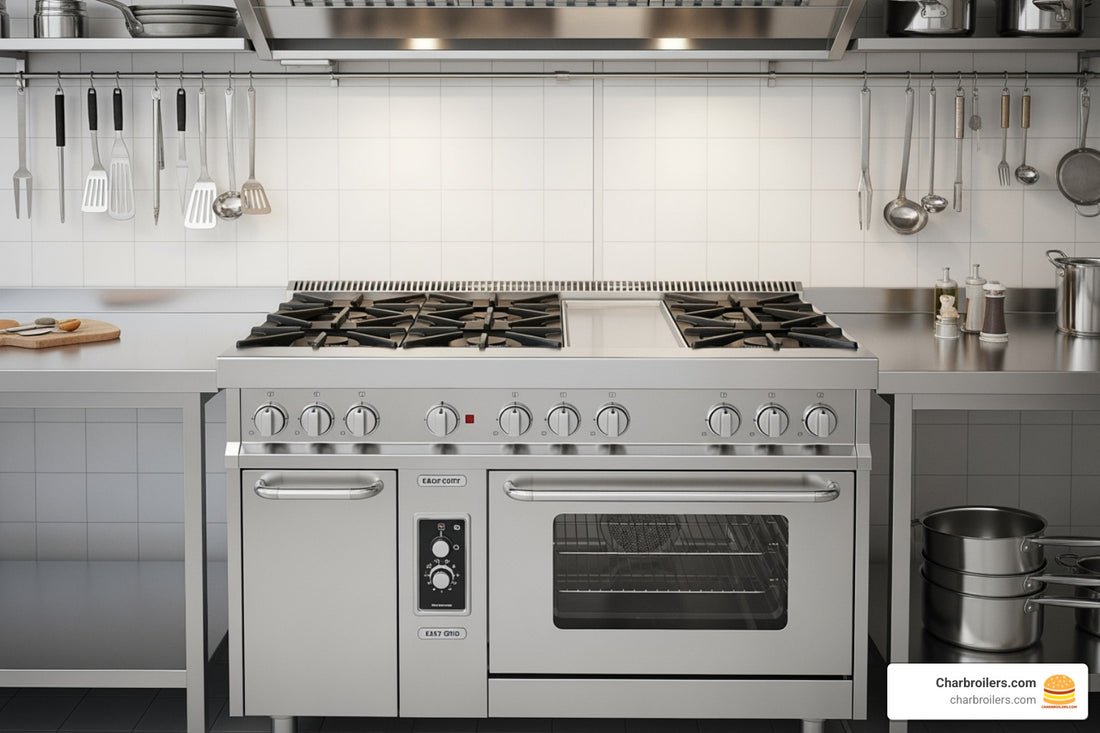
Unleash Culinary Power: Commercial 6 Burner Gas Ranges with Convection Ovens
Share
Why a Commercial 6 Burner Gas Range with Convection Oven is Your Kitchen's MVP
A commercial 6 burner gas range with convection oven delivers the cooking power, versatility, and efficiency that busy restaurant kitchens demand. If you're evaluating options, here's what to prioritize:
- BTU Output: 188,000-307,000 total BTU, with individual burners at 26,000-33,000 BTU.
- Convection Oven: 30,000-38,000 BTU with a 1/2 HP blower motor for even baking and faster cooking.
- Size: Standard 36-inch width; oven interiors fit full-size sheet pans.
- Construction: Stainless steel exterior, cast iron grates, and a porcelain oven interior.
- Certifications: NSF, ETL, or CSA Certified for safety and compliance.
- Fuel Options: Natural gas or propane (typically requires a 3/4" gas connection).
- Price Range: $2,000-$13,000 depending on brand and features.
This high-output range offers six open burners and a convection oven, allowing you to fry, grill, and bake all at once. In a commercial kitchen, this saves space and provides the power to sauté, sear, simmer, bake, and roast simultaneously. The convection oven's fan-driven heat cuts cooking times by up to 25% and produces even results, leading to faster ticket times and happier customers.
The challenge is finding a range that works reliably under high-volume demands, fits a budget, and is easy to clean. I'm Sean Kearney from Charbroilers.com, and with over a decade in the restaurant equipment industry, I've helped hundreds of kitchens find the right commercial 6 burner gas range with convection oven. I'll walk you through what really matters when choosing this essential kitchen workhorse.
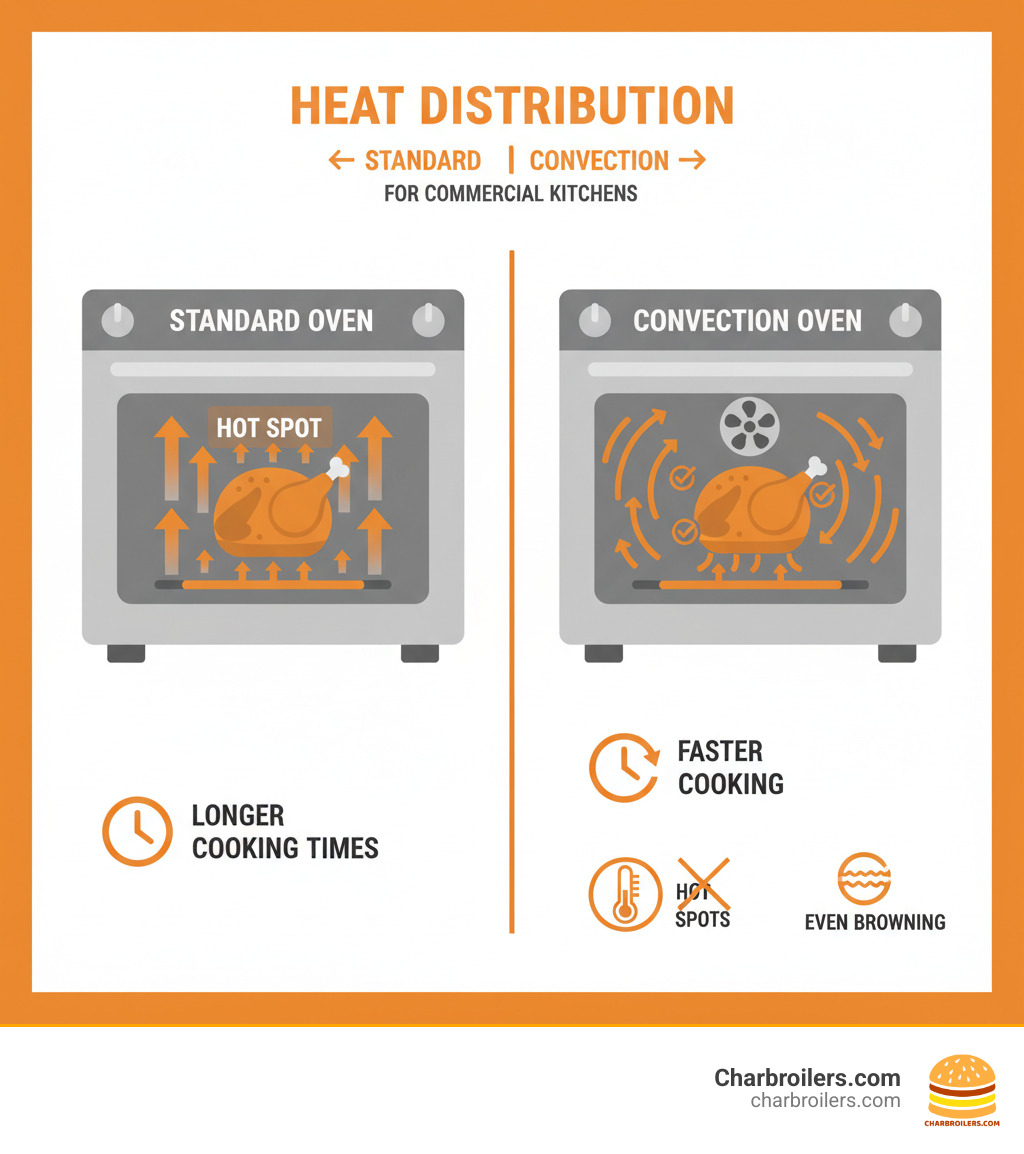
Commercial 6 burner gas range with convection oven basics:
- how does a commercial convection oven work
- do commercial convection ovens need venting
- commercial convection ovens
The Ultimate Kitchen Workhorse: Why Your Restaurant Needs This Range
Imagine your kitchen on a busy Saturday night. Your team is pan-searing salmon, grilling steaks, simmering sauces, and baking desserts—all on one piece of equipment. That's the power of a commercial 6 burner gas range with convection oven.
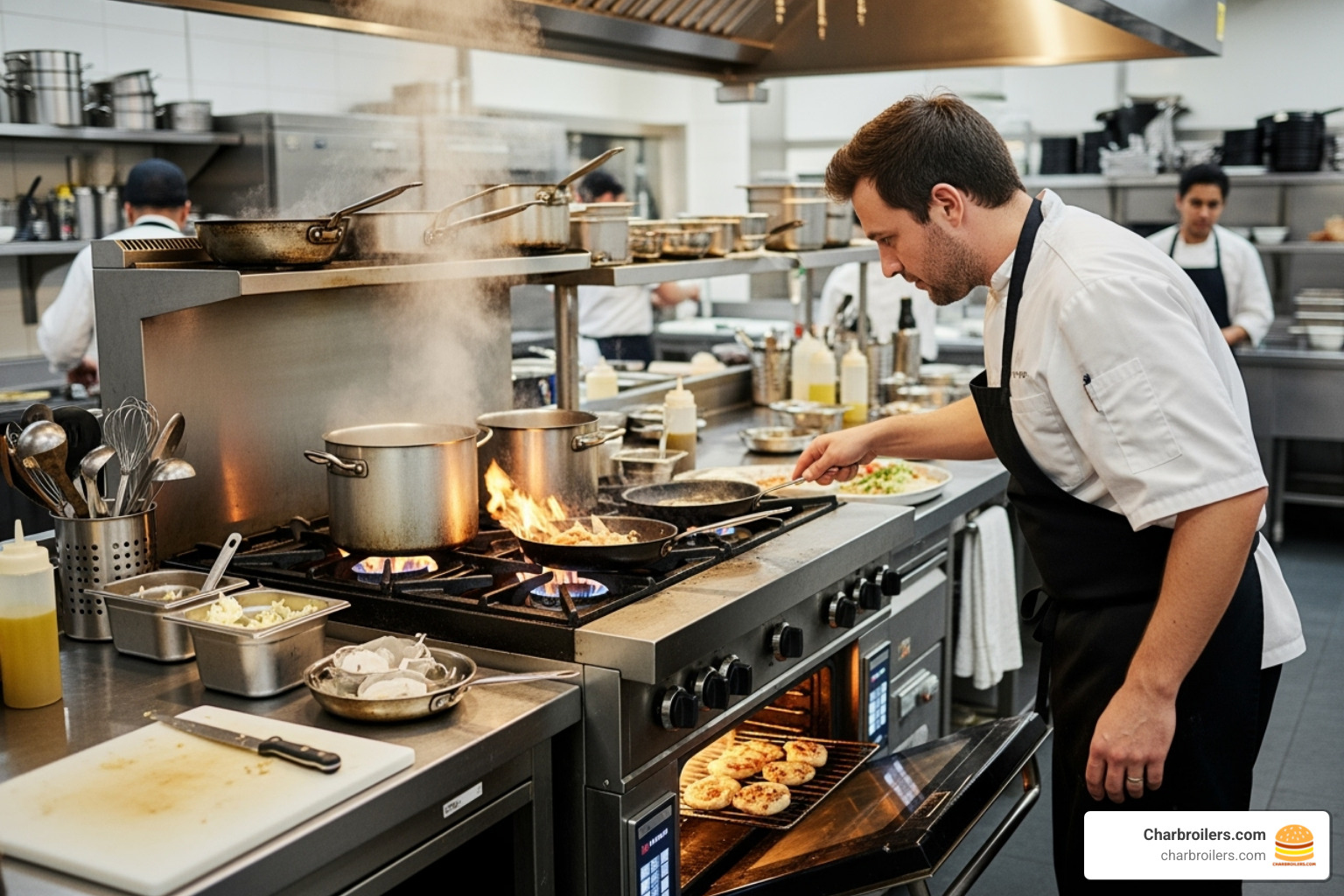
This unit is the backbone of your operation, serving as an entire cooking station in a single footprint. Instead of juggling separate pieces of equipment, you gain increased efficiency and menu versatility. This kind of high-volume output with consistent cooking results is what separates restaurants that thrive from those that struggle during the dinner rush.
Unlock Culinary Excellence: Exploring Commercial Gas Ranges with Convection Ovens
Boost Efficiency and Achieve Consistent Results
The beauty of a commercial 6 burner gas range with convection oven is its ability to perform multiple jobs simultaneously. This multi-functionality allows your chefs to sauté, fry, bake, and broil without missing a beat, eliminating bottlenecks and creating streamlined operations. With six burners and a full-size oven, your team can prep, cook, and finish dishes in one zone, leading to reduced cook times and faster table turnover.
This high-volume capability doesn't sacrifice quality. Commercial gas burners offer precise temperature control, responding instantly to adjustments for everything from a gentle simmer to a high-heat sear. The convection oven is the key to consistency, using a fan to circulate hot air for even heat distribution. This eliminates hot spots, resulting in perfect browning and roasting every time. It also helps reduce food shrinkage by sealing in moisture, improving your yield on proteins and delivering a juicier final product.
Cook Faster, Earn More: Top Industrial Convection Ovens Reviewed
Buyer's Guide: Key Features of a Commercial 6 Burner Gas Range with Convection Oven
Choosing the right commercial 6 burner gas range with convection oven is a critical decision. Get it right, and you'll have a reliable partner for years. Let's walk through the essential features that separate a mediocre range from a high-performance one.
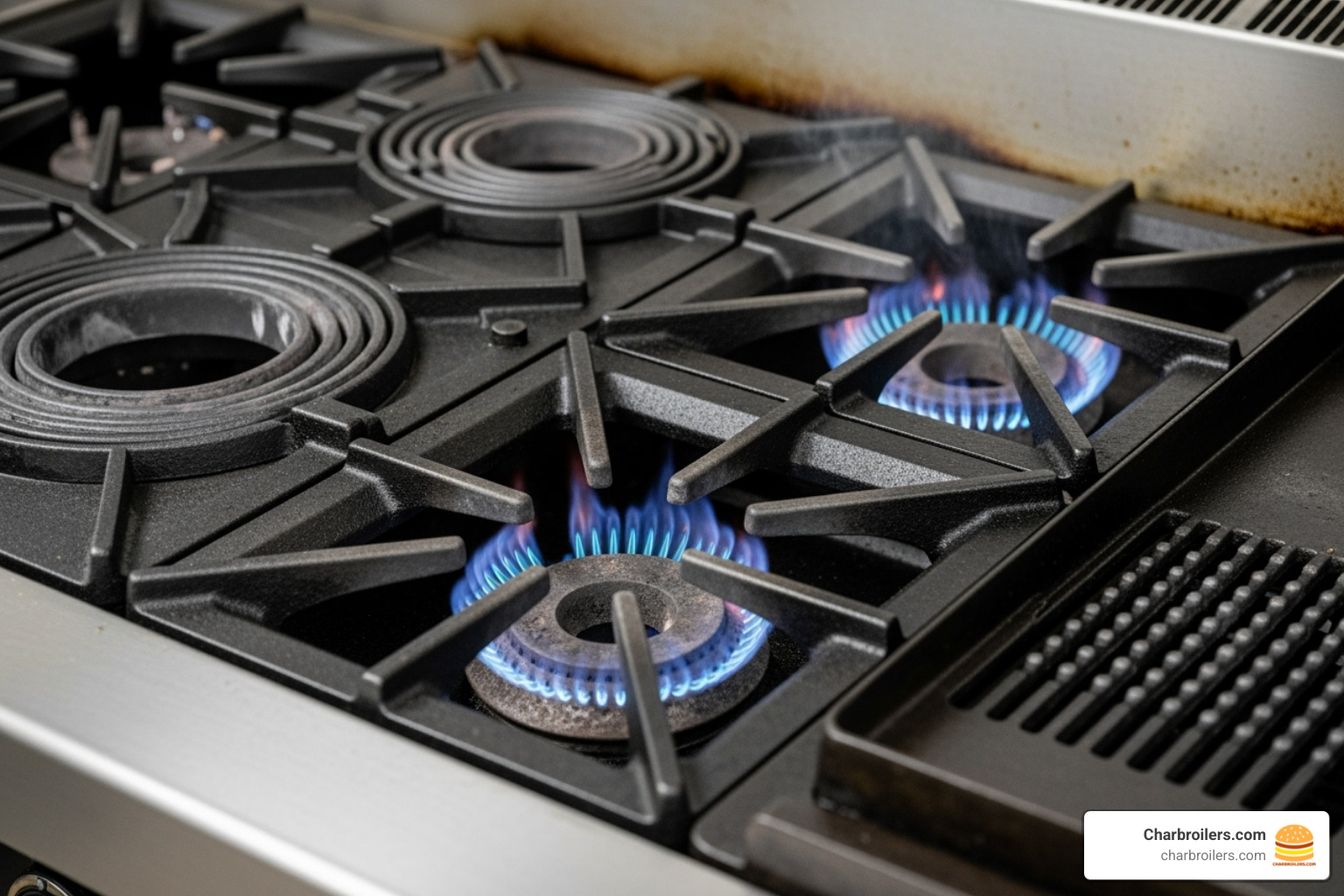
| Feature | Typical 36" Wide Model | Larger 60" Wide Model |
|---|---|---|
| Total BTU Output | 188,000 - 222,000 BTU | 295,000 - 307,000 BTU (often with additional features) |
| Individual Burner BTU | 26,000 - 33,000 BTU | 33,000 BTU |
| Convection Oven BTU | 30,000 - 32,000 BTU | 35,000 - 38,000 BTU (often two ovens) |
| Oven Capacity | Approx. 4.5 cu. ft. | Approx. 4.5 cu. ft. per oven |
| Oven Interior (WxDxH) | 26.25" x 22-26" x 13-14" | 26.25" x 22-26" x 13-14" (per oven) |
| Exterior (WxDxH) | 36" x 31.5"-39.5" x 56"-57" | 60" x 38.375"-41" x 57"-58" |
| Construction | Stainless steel exterior, cast iron grates, porcelain interior | Stainless steel exterior, cast iron grates, porcelain interior |
| Warranty | 1-Year Parts & Labor | 1-Year Parts & Labor |
Understanding Power: BTU Output Explained
BTU (British Thermal Unit) measures heat output, and having enough power is critical. For a commercial 6 burner gas range with convection oven, you'll see three key ratings. The total BTU output (188,000 to 307,000) indicates the combined power of the entire unit.
Individual burner BTU ratings, typically 26,000 to 33,000, are crucial for cooking. A 30,000+ BTU burner is ideal for searing, while some designs offer excellent control for low-temperature simmering. The convection oven BTU (30,000 to 38,000) ensures the oven heats quickly and maintains consistent temperatures. Match your BTU needs to your menu—a high-heat stir-fry restaurant needs more power than a cafe focused on baking.
The Convection Advantage in a commercial 6 burner gas range with convection oven
The convection oven is a key feature that sets this equipment apart. Instead of relying on static heat, a convection oven uses a fan (often powered by a 1/2 HP motor) to circulate hot air. This constant movement eliminates hot spots and ensures the entire oven cavity maintains a consistent temperature.
This results in faster cooking times—often by 25% or more—and remarkably even baking and roasting. You can cook on multiple racks simultaneously without sacrificing quality. An added benefit is reduced food shrinkage, as the even heat seals in moisture, improving yield and creating juicier final products. Most models include a safety feature that shuts off the fan when the door is opened, preventing heat loss and protecting staff.
Convection Perfection: Top Ovens for Your Commercial Kitchen
Built to Last: Materials and Construction
Commercial ranges must be built to withstand the daily punishment of a professional kitchen, which is why construction quality is essential. The best ranges feature a stainless steel exterior (front, sides, and backguard) for durability and easy cleaning. Inside the oven, a porcelain enamel interior simplifies cleanup of spills and drips.
Heavy-duty cast iron grates are necessary to support large, heavy pots without warping. Look for a fully MIG welded frame for structural integrity and adjustable 6-inch legs to level the unit on uneven floors. These details ensure the range will perform reliably for years.
See examples of durable range construction
Essential Safety and Certification Marks
Safety certifications are non-negotiable, as they are often required by health departments and insurance companies to ensure safe operation and protect you from liability. Look for these critical marks:
- NSF Listed: Confirms the range meets public health and sanitation standards.
- ETL Sanitation: An alternative certification verifying compliance with sanitation standards.
- CSA Certified: Verifies that gas and electrical components meet US and Canadian safety standards.
Beyond certifications, look for built-in safety features like automatic safety pilots, which reignite burners if the flame goes out, and cool-to-the-touch knobs to prevent burns during busy service. These features protect your staff, your business, and your investment.
Installation, Sizing, and Maintenance Essentials
Properly installing and maintaining your commercial 6 burner gas range with convection oven is key to its longevity and performance. This is a serious piece of machinery that demands careful planning, from measuring your space to establishing a daily care routine.
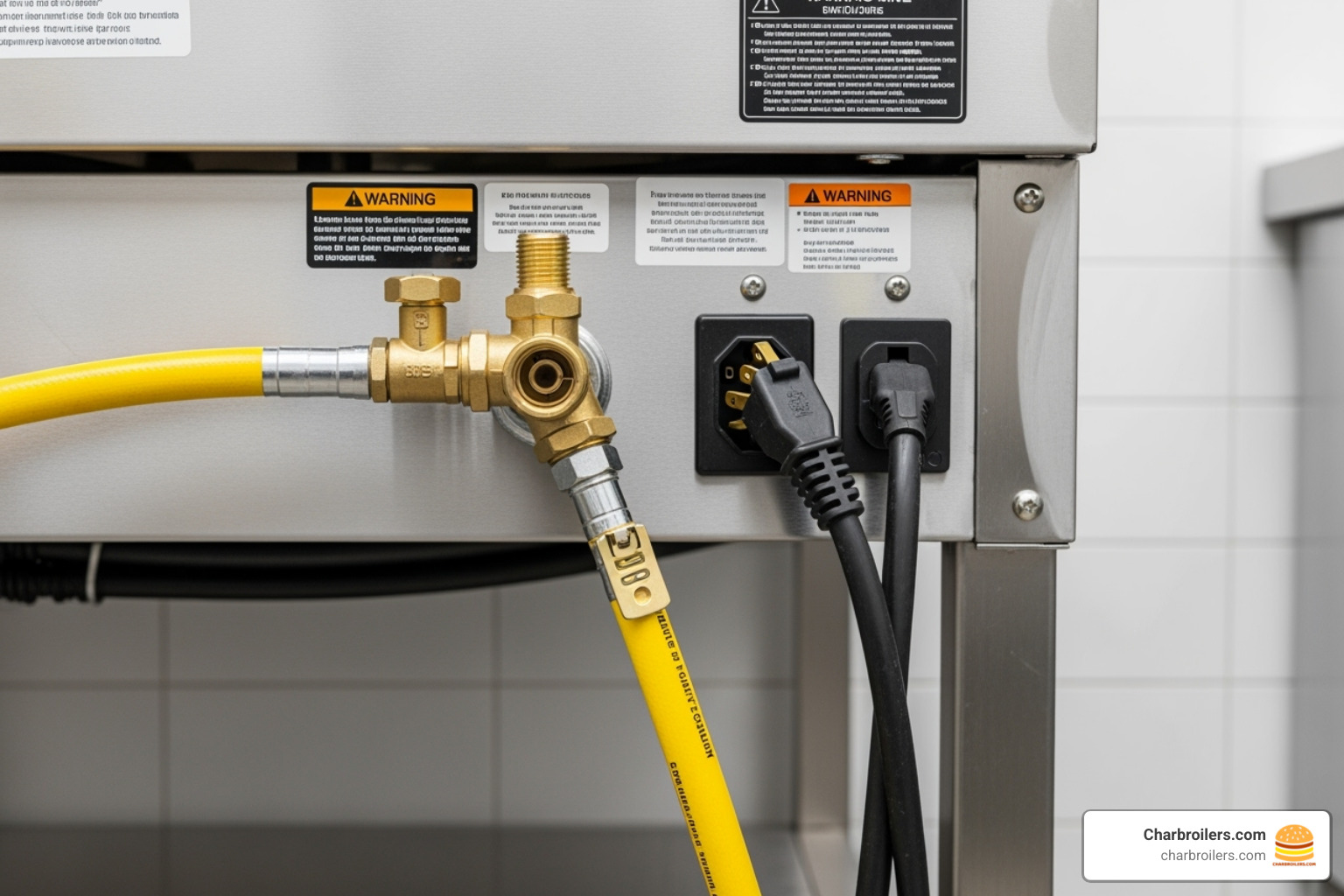
Professional installation is non-negotiable for connecting to gas and electrical systems, as improper setup can create safety hazards and void your warranty. Your kitchen layout must also accommodate workflow around the range. A well-maintained range will serve you for years, but neglect can shorten its lifespan and create safety issues.
Sizing and Space Planning for your commercial 6 burner gas range with convection oven
Properly measuring for your range is crucial. A commercial 6 burner gas range with convection oven has a large footprint, and an error in measurement can disrupt your entire kitchen layout. The standard 36-inch width fits most kitchens, while larger 60-inch models offer more capacity and features like griddles or dual ovens.
The oven cavity is typically around 26 1/4" W x 22-26" D x 13-14" H, designed to hold full-size 18" x 26" sheet pans. With a capacity of about 4.5 cubic feet, there's ample room for large roasts or multiple dishes. Don't forget to account for mandatory clearance requirements for ventilation and maintenance access, as specified by the manufacturer. Ignoring these creates a fire hazard. Standard adjustable 6-inch legs allow you to level the unit on uneven floors.
Top Picks for 48 Inch Commercial Gas Stoves That Really Cook
Fueling Your Kitchen: Natural Gas vs. Propane
Your fuel choice—natural gas or propane—affects installation and operating costs. Natural gas is typically more economical and supplied continuously via utility lines, operating at a manifold pressure of 5.0 inches W.C. Liquid propane is stored in tanks, making it ideal for locations without gas lines, and operates at a higher pressure of 10.0 inches W.C.
A range must be configured for one fuel type; they are not interchangeable without professional conversion. Most units require a 3/4-inch NPT gas connection, a job for a licensed professional. Additionally, equipment used at elevations above 2,000 feet requires special adjustments to operate correctly. If you're at a high elevation, contact our Special Orders team before purchasing to ensure your unit is properly configured.
Explore various gas range options
Maintenance, Warranty, and Support
Protecting your investment requires consistent maintenance and understanding your warranty. Daily cleaning is essential to prevent grease buildup, which is a fire hazard. Modern ranges are designed for easy cleaning, with features like lift-off burners for thorough scrubbing and removable crumb trays to catch debris.
The industry-standard warranty is one year for parts and labor, covering manufacturing defects. This warranty is typically voided if the equipment is used in a non-commercial (residential) setting. When issues arise, reliable support is crucial. At Charbroilers.com, we stand behind our equipment and can help you source parts and accessories to keep your range running smoothly for its entire lifespan, which can easily be a decade or more with proper care.
Frequently Asked Questions
Here are answers to the most common questions about a commercial 6 burner gas range with convection oven.
What is the main benefit of a convection oven in a gas range?
The main benefit is faster, more consistent cooking. A fan circulates hot air, eliminating hot spots and reducing cooking times by up to 25%. This is ideal for baking, roasting, and reheating, as it produces evenly browned results and reduces food shrinkage, which improves your food cost and yield.
How much power (BTU) do I really need?
The required BTU depends on your menu. For high-heat searing or boiling large pots, look for individual burners rated at 30,000 BTU or more. Most ranges offer 26,000-33,000 BTU per burner. The oven typically requires 30,000-38,000 BTU for quick preheating. Total BTU (188,000-307,000) reflects the unit's overall capacity. Match the power to your kitchen's specific volume and cooking style rather than simply choosing the highest number.
What is the difference between a commercial range and a "commercial-style" residential range?
The key differences are durability, power, and safety certifications. True commercial ranges are built with heavy-duty materials to withstand constant, high-volume use. They deliver higher, sustained BTU output and must have safety certifications (like NSF, ETL, and CSA) required by health departments. A "commercial-style" residential range is not built for this environment, and using one in a professional kitchen will void its warranty and may violate health codes.
See a commercial-style residential model for comparison
Conclusion: Power Up Your Culinary Creations
A commercial 6 burner gas range with convection oven is more than an appliance—it's the heart of your kitchen, enabling you to execute service with confidence and precision.
We've covered the essentials: the power of high-BTU burners, the efficiency of convection technology, durable construction, and the details of sizing, fuel types, safety certifications, and maintenance. This knowledge will help you choose a range that performs reliably for years. Upgrading your kitchen's core equipment is one of the smartest investments you can make. You're not just buying cooking power—you're buying the ability to expand your menu, serve more customers, and maintain consistency.
At Charbroilers.com, we've spent over a decade helping restaurant owners like you make these decisions. We understand that every kitchen has unique demands, and we're here to help you find the right solution that fits your specific needs and sets your kitchen up for long-term success.
Ready to transform your kitchen operations? We're here to help you power up your culinary creations.
